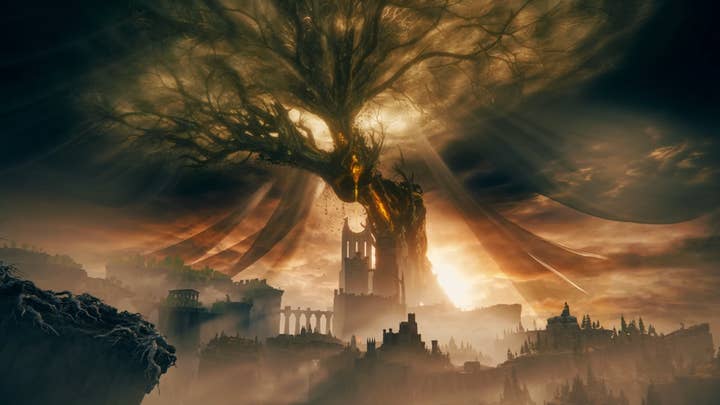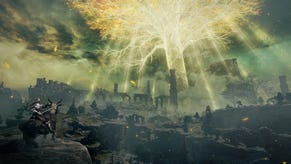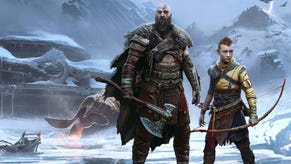Even hardcore audiences love DLC – when it's done right | Opinion
While many developers have turned to cosmetic items for their post-launch content plans, Shadow of the Erdtree shows us the gold standard for a major DLC expansion
Bethesda's $2.50 horse armour DLC for Oblivion turns 18 this year – a realisation which made me feel like I was about to spontaneously crumble to dust and be blown away on a breeze.
There's an entire generation of gamers to whom it would be very challenging to explain why the launch of this seemingly innocuous add-on was such a pivotal moment for the industry's development; why for the best part of a decade afterwards, an eye-roll and a snorted exclamation of "horse armour!" was a devastating put-down to almost any DLC plans.
Attitudes have undoubtedly softened over time, especially in younger cohorts who have grown up with most major games having paid-for add-ons of various types, but there is still a conventional wisdom which says that more "hardcore" consumers, and older consumers, really don't like paid-for DLC in general.
That's an oversimplification of the attitudes involved, but it's not entirely unfounded – at least, it's certainly in line with what we see in online discourse around game announcements. If you listen closely you can hear an audible groan rise from the server farms of Discord and Reddit whenever a game is announced alongside details of its add-on content season pass, as has been common practice for the best part of a decade now.
The horse armour won, in the end.
The assertion made by the loudest detractors – and clearly believed by a not insignificant chunk of the audience – is that complete games are having parts sliced off them and repackaged as DLC, with the true, full game that we "should" have been getting at launch only eventually being sold as some kind of Game of the Year edition further down the line.
It's a narrative that tickles the two foundational prejudices of the internet's self-styled angry and/or bitter gamers – that publishers are greedy, and developers are lazy.
The robust and generally well-founded pushback to this narrative from developers is straightforward – that while they generally have ideas for DLC in mind before a game launches, it's not the case that content which actually exists has been cut out.
There are storylines and scenarios and concept art, yes, but actually building those sections of the game is a task that doesn't get properly underway until after the launch. There's a plan for future expansion, not a chunk of finished content being locked away by greedy business bosses.
An unfortunate wrinkle in the otherwise robust fabric of that counter-argument is that while this scenario is usually the case, there have undoubtedly been situations where DLC planning has been rather less pure-hearted – and it only takes a couple of cases of the DLC model being abused to convince some consumers that a giant business conspiracy to defraud gamers is unfolding behind every launch.
I'm not sure any developer other than FromSoftware could get away with this kind of thing; the fact that they do, and to rapturous praise, is worth looking at
Some high-profile games have launched in pretty awful states – very obviously lacking large amounts of planned content or features, with huge technical issues, and so on – but nonetheless accompanied their launches with expensive season passes and high-profile promotion of DLC roadmaps.
A few bad apples can spoil the whole barrel, and it doesn't take too many of those cases to make a certain segment of the audience – the more hardcore audience that's more plugged into these online discourses – sour on DLC as a broader concept.
Yet even at that, saying that these audiences don't like DLC is a vast over-simplification of a much more nuanced set of views. Case in point: Elden Ring's DLC, Shadow of the Erdtree, is arguably the most talked-about game of the month, having earned soaring review scores and fantastic word-of-mouth from exactly the kind of hardcore audience who supposedly don't like DLC and paid add-ons.
By the conventional wisdom, this is an add-on that shouldn't even exist, let alone be so popular. Instead, it appears to have been crafted as a love-letter to the hardcore fans of an already pretty hardcore game; you need to have defeated an optional boss in Elden Ring who is tough to find, let alone defeat, even to access the new content.
I'm not sure any developer other than FromSoftware could get away with this kind of thing; the fact that they do, and to rapturous praise, is worth looking at.
Context matters, of course. Some kind of plan did exist for Shadow of the Erdtree all the way back when Elden Ring launched – there are plenty of loose ends in the original game that are clearly meant to be tied up in a future expansion – but nobody could argue with a straight face that a game of the scope and scale of Elden Ring was incomplete or had seen content sliced off to create a DLC pack.
Moreover, it's taken almost two years for this expansion to arrive, and it's enormous in its own right, essentially the size of a whole new game by itself.
It only takes a couple of cases of the DLC model being abused to convince some consumers that a giant business conspiracy to defraud gamers is unfolding
Those old enough to remember game expansion packs will recognise the Shadow of the Erdtree formula as owing far more to that now-rare approach than to the more conventional modern 'season pass' approach of dropping three or four new pieces of content over the course of a year or so. Much of the positive reaction to this DLC likely owes to FromSoftware having planned it as a full expansion pack rather than as a slice of DLC.
FromSoftware isn't the only company taking this approach of launching large, high-quality DLC packs in the mould of expansion packs, of course. Cyberpunk 2077's equally rapturously received Phantom Liberty DLC is another great recent example. At a little more of a stretch you could point to the extremely positive reception around Final Fantasy XIV's major expansions (notably Shadowbringers and Endwalker), or even to the Miles Morales spin-off from Insomniac's Spider-Man game, as further examples.
The common point between all of these is that they genuinely offer what DLC always claims, but so infrequently delivers. Here is a significant (both in size and scope) and transformative addition to a game that's already thoroughly loved by its players, giving dozens of hours of extra playtime at a very reasonable price.
Given that the base game is a known quantity, and of very high quality, it's a no-brainer for many players to buy this kind of DLC; more of something you already know you enjoy is an easier purchasing decision than taking a punt on a game you haven't played yet.

This is the gold standard for DLC, and ought to be what every developer planning an expansion roadmap tries to emulate – reaching high, even if many will fall short is likely.
Getting the base game right is absolutely central to this formula; trying to sell players DLC when the original game is still in need of extensive fixing is like trying to hand restaurant customers a dessert menu when the main course wasn't cooked properly and half the dishes never arrived.
Moreover, DLC of this kind needs to be meaty enough to be worth getting back into the game in the first place. By the time your DLC launches, most players have moved on to new games, so you need to be promising them a significant experience – and ideally one that transforms the original game in interesting ways – to convince them to come back and play again.
This is not not, however, the only approach to DLC and in-game purchases, nor is it the only approach players have come to accept. Which brings us back to Bethesda's horse armour, as it prepares to graduate high school and pack its bags for college.
For all the mockery and negativity around the horse armour – which admittedly was a bit daft in a game that had such an extensive range of free community-developed mods – the reality is that for most of the audience currently in their early thirties and below, charging $2.50 for a cosmetic in-game item seems perfectly natural and uncontroversial. If anything, they might be surprised at how cheap that is. The horse armour won, in the end.
Trying to sell DLC when the original game is still in need of fixing is like trying to hand restaurant customers a dessert menu when the main course wasn't cooked properly and half the dishes never arrived
Cosmetic DLC – costumes and weapons and fripperies that do little but customise the game experience in various ways – is now an intrinsic part of the business model of many games, and can be surprisingly successful even in single-player titles where you might expect the instinct to peacock by dressing up characters to be minimal.
This kind of DLC approach is still mocked on occasion, especially when developers go overboard with it (and doubly so when the base game is notably barren in that department before you open the store page), but I'd argue that most consumers have come around to the reasoning that these are essentially the gaming equivalent of luxury items.
You don't need them to enjoy the game, but can blow some cash on them if they really tickle your fancy – yet just as the existence of a high-end Rolex doesn't change the fact that a digital Casio tells the time just as well, most cosmetic DLC doesn't detract from the game experience by its existence.
Where this can go wrong is with things like fighting games, where unlocking costumes for the character roster has traditionally been a core goal of progression in many franchises. Consequently, locking up too many costumes behind a paywall really is detracting from the game experience, and goes down like a lead balloon with players (see also: the industry's what-not-to-do whipping boy icon, Overwatch 2).
The lesson from the success of expansions like Shadow of the Erdtree is that DLC really can resonate even with the audiences who supposedly resist it the most
Nonetheless, this kind of DLC occupies the opposite end of the spectrum from the large, expansion-pack style offerings of Shadow of the Erdtree or Phantom Liberty, and it's at those extremes of the spectrum that DLC seems to find the most success and acceptance.
Developers working on post-launch content plans for their games would do well to consider the kind of audience they're working to attract, and pick a lane based on that assessment – either making big, meaningful expansions, or small cosmetic tchotchkes that serve as disposable luxuries.
It's in the middle ground that DLC tends to trip up and annoy people the most – slices of content that aren't sufficiently differentiated from the core game, don't justify either the price of entry, and aren't worth the mental effort of picking back up in a game players moved on from months ago.
The lesson from the success of expansions like Shadow of the Erdtree is that DLC really can resonate even with the audiences who supposedly resist it the most – but if a game doesn't justify an expansion on that scale, it's worth seriously considering whether adding a small zone and a handful of missions is worthwhile at all, or whether simply downscaling to cosmetics is going to be a far better allocation of resources.









